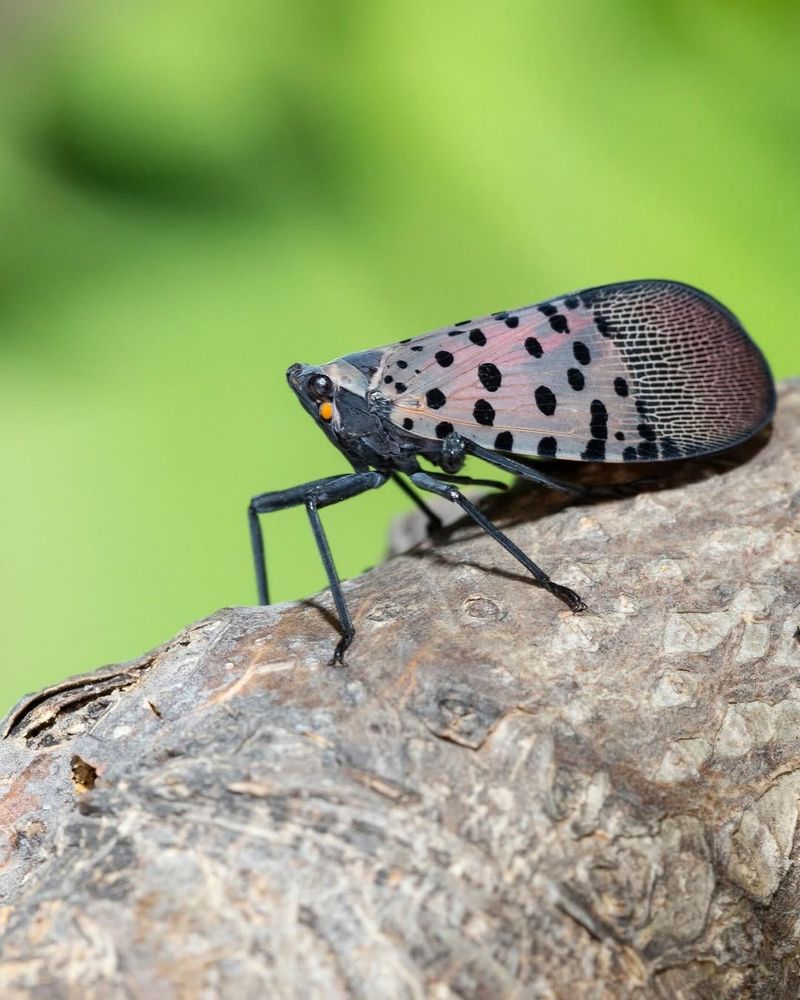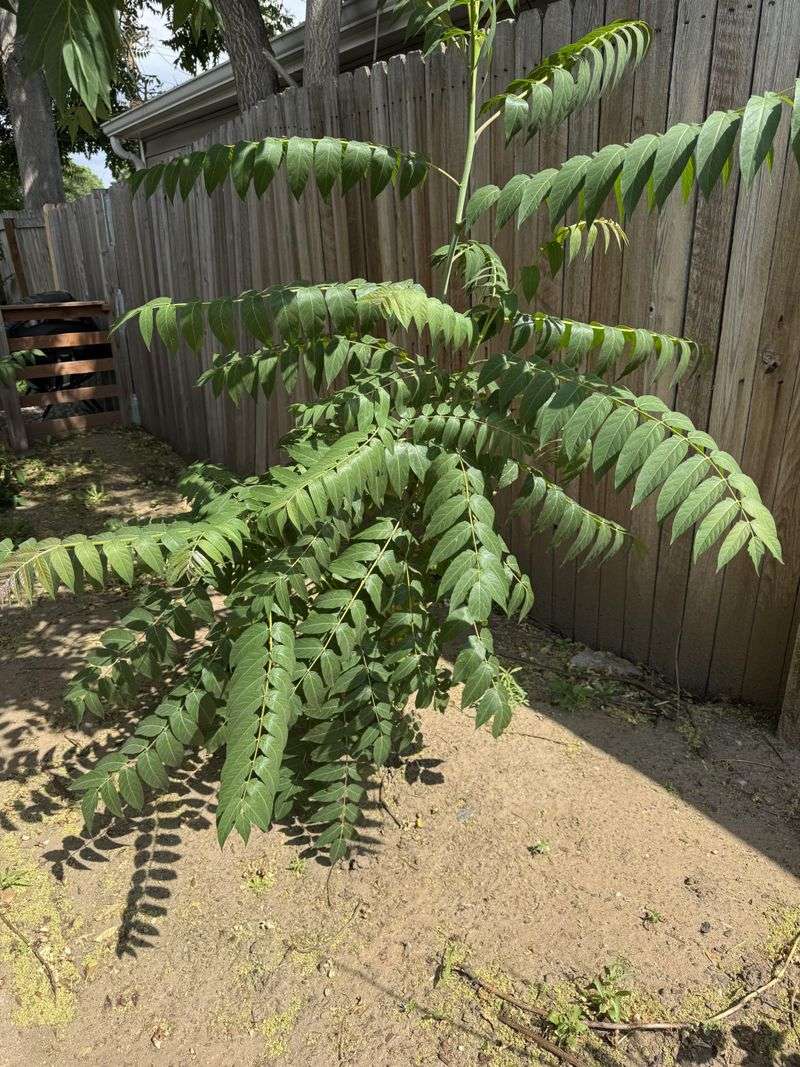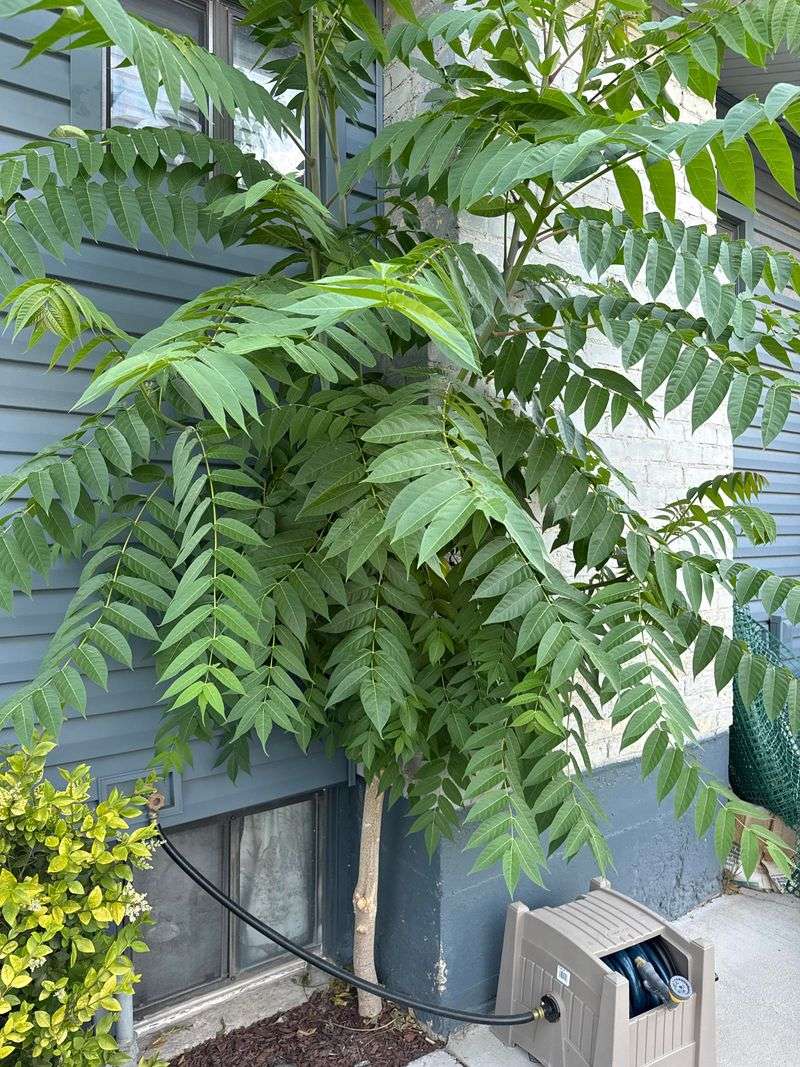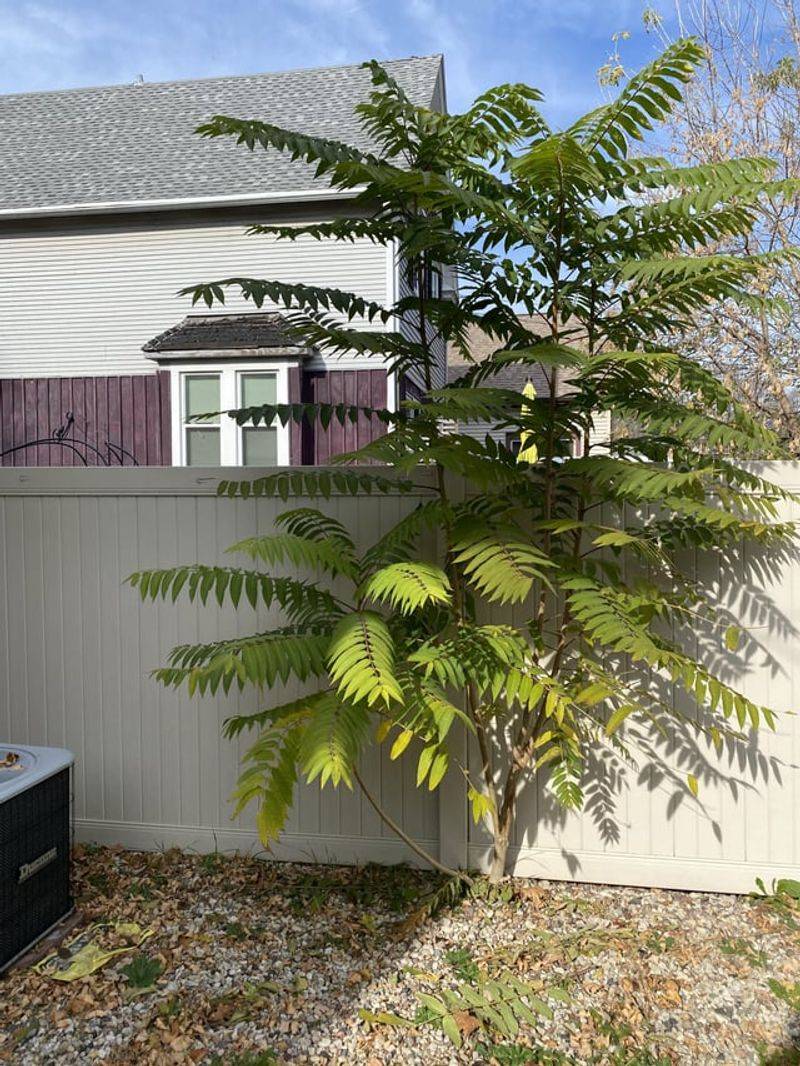Have you ever noticed a fast-growing tree with tropical-looking leaves in your neighborhood? It might be the Tree of Heaven, and while it sounds like a blessing, this tree could actually bring unwanted guests to your Texas yard.
Spotted lanternflies love this tree, and these invasive insects can cause serious damage to plants and crops. Learning about the Tree of Heaven can help you protect your property and understand why experts are concerned about its spread.
1. Originally From China, Now A Texas Problem
Brought to the United States in the late 1700s as an ornamental plant, the Tree of Heaven seemed like a great addition to gardens and parks. People loved how quickly it grew and how it survived in almost any condition.
Fast forward to today, and this Chinese import has become a major headache across Texas and beyond. It spreads aggressively, crowds out native plants, and creates perfect homes for spotted lanternflies, making it more of a curse than a heavenly tree.
2. Spotted Lanternflies Love It Like Candy
Spotted lanternflies have a favorite food source, and the Tree of Heaven tops their menu. These colorful but destructive insects feed on the tree’s sap, using it as their primary host plant throughout their life cycle.
When lanternflies find a Tree of Heaven, they stick around and multiply rapidly. Female lanternflies even lay their egg masses on the bark, creating generation after generation of pests that can then spread to your grape vines, fruit trees, and garden plants.
3. Grows Faster Than Most Weeds
Most trees take years to reach maturity, but the Tree of Heaven acts more like a weed on steroids. Young trees can shoot up three to six feet in a single growing season, making them one of the fastest-growing trees in North America.
This explosive growth means a small sapling can become a towering problem in just a few years. The tree also sprouts from its roots, creating entire groves from just one original plant and making removal incredibly frustrating for Texas homeowners.
4. Releases Chemicals That Kill Neighboring Plants
Nature gave the Tree of Heaven a sneaky superpower called allelopathy, which means it releases toxic chemicals into the soil around its roots. These chemicals prevent other plants from growing nearby, giving the tree less competition for water, sunlight, and nutrients.
Your native Texas plants and garden vegetables don’t stand a chance against this chemical warfare. The tree essentially poisons the ground around it, creating a dead zone where only it can thrive and dominate the landscape completely.
5. Identification Is Key To Controlling The Spread
Learning to spot a Tree of Heaven can save your yard from invasion. Look for compound leaves with 11 to 25 leaflets arranged along a central stem, each with small glands near the base that give off a rotten peanut butter smell when crushed.
The bark appears smooth and gray on young trees but develops rough diamond-shaped patterns as it ages. Many Texas people confuse it with sumac or walnut trees, so checking for that distinctive unpleasant odor is your best identification tool.
6. Removal Requires Persistence And Proper Technique
Simply cutting down a Tree of Heaven won’t solve your problem because it will sprout back even stronger from its extensive root system. Effective removal requires cutting the tree and immediately applying herbicide to the fresh stump to kill the roots.
Smaller trees can be pulled out entirely if you get all the roots, but larger specimens need professional help. Never compost any part of this tree, as seeds and root fragments can survive and create new problems elsewhere in your Texas yard.







